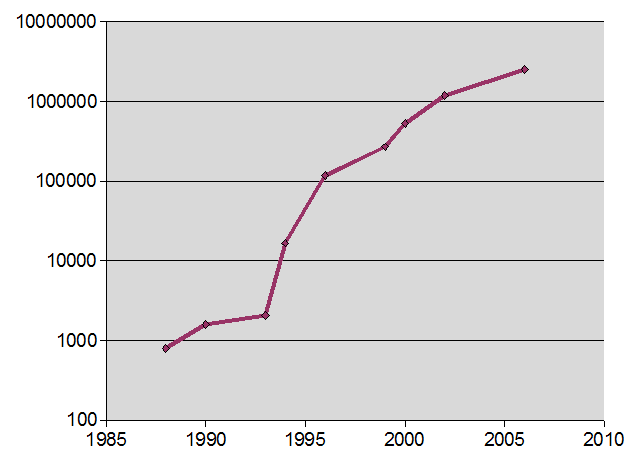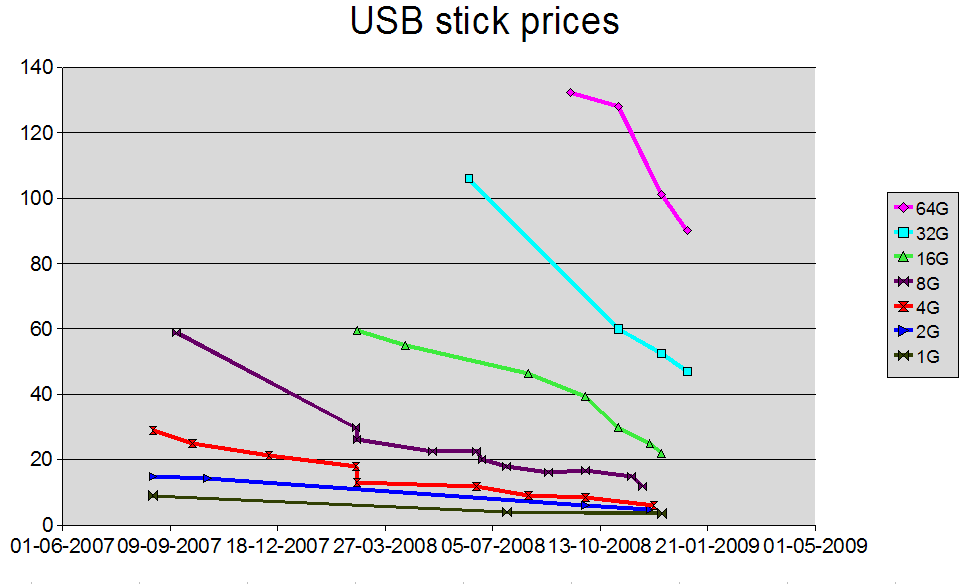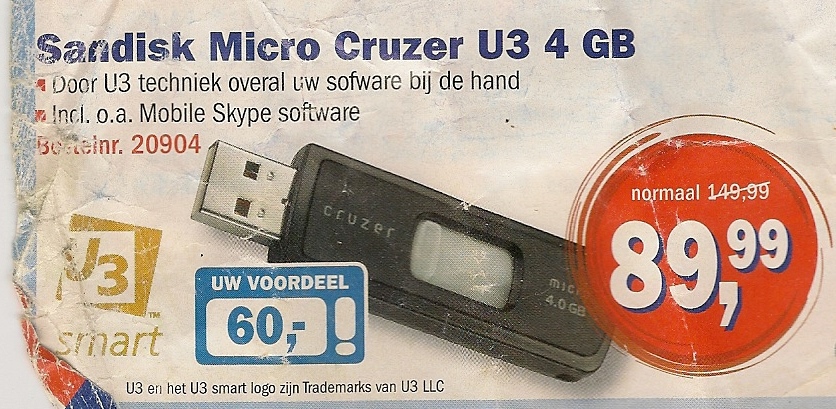

Often people don't understand its true effects.
Take a piece of paper, divide it in two, and write this year's date in one half:
Now divide the other half in two vertically, and write the date 18 months ago in one half:
Now divide the remaining space in half, and write the date 18 months earlier (or in other words 3 years ago) in one half:
Repeat until your pen is thicker than the space you have to divide in two:
This demonstrates that your current computer is more powerful than all other computers you have had put together (and the original Macintosh (1984) had tiny amounts of computing power available.)

What is less well-known is that bandwidth is also growing exponentially at constant cost, but the doubling time is 1 year!
(Actually 10½ months according recently to an executive of one of the larger suppliers)
Put another way, in 7 years we could have 1 Gigabit connections to the home.

When The Netherlands were first connected to the internet (1988), the connection speed for the whole of Europe to the whole of North America was:
64 kilobits per second
The speed of a floppy disk.

 (At the time of writing, a 4G stick costs around €6)
(At the time of writing, a 4G stick costs around €6)
Not surprisingly, as a consequence disks are becoming a commodity, and more and more data is moving into "the cloud" (whether personal, or supplied by third parties.).
It started with email, moved to photos, and many are now storing documents in the cloud.
Now we are getting cloud-based operating systems (which you could see as the return of the thin client).
In the future, everything will come over the net. There will be no need for local permanent storage, in fact it would be a disadvantage to have to use it.
Consequently there will be less and less reason for the distinction between local documents, and documents on the internet that we now have. It will be more a distinction of who has the rights to see and modify particular documents.
ODF 1.2 is now more-or-less ready. Going through the final stages.
ODF was originally designed as a desktop document format.
However, it is just an XML Format, with many web-based technologies as part of it, such as XForms and RDFa.
The direction ODF needs to go in is to recognise the migration to the cloud, and integrate into the browsing experience.